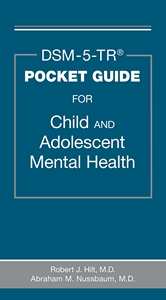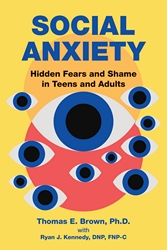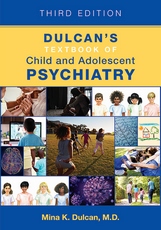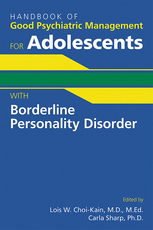Normal Child and Adolescent Development
A Psychodynamic Primer
View Pricing
Description
Normal Child and Adolescent Development: A Psychodynamic Primer presents a complete picture of mental development, informed by contemporary research and psychodynamic thinking. Dr. Gilmore and Dr. Meersand have taught human development to psychiatric residents, psychology doctoral students, and psychoanalytic candidates for more than a decade, and found an acute need for accessible material integrating recent findings in the psychodynamic literature and psychology research with information on development as a dynamic interaction of the growing mind (including the unconscious mind), the maturing body, and the evolving demands of environment. The book is their response to this need, and it is as unique as it is useful, as compelling as it is comprehensive.
Replete with new ideas and fascinating connections, the volume is also beautifully written and a pleasure to read. The clinical vignettes in the text are vivid narratives that make the child at different stages recognizable and memorable. In addition, online video illustrations reinforce the key characteristics at each phase of normal development. In brief:
- The authors begin with an introduction to the book's theoretical orientation and end with a brief reprise of the importance of developmental thinking in clinical practice, forming a clear framework for the authors' perspective.
- The authors use familiar developmental demarcations, informed by current thinking, to present chapters on infancy, toddlerhood, oedipal age, latency, preadolescence, early and mid-adolescence, late adolescence, and the still-controversial phase of emerging adulthood.
- The section on the oedipal-age child merits two chapters, testament to the authors' belief in the critical nature of this phase, which marks a momentous transition in mental development.
- Grounded in the belief that an understanding of development is a building block of clinical thinking, the book emphasizes that every patient encounter demands familiarity with developmental concepts, as well as the understanding that past and present are inextricably woven together, and that present consciousness is an amalgam of all experience.
The book's multisystem approach shows the complexity and diversity of human development. Truly, Normal Child and Adolescent Development: A Psychodynamic Primer is a twenty-first century text, and one that both students and practitioners in psychiatry, psychology, and psychoanalysis will welcome as a valuable resource.
Contents
- About the Authors
- Preface
- Acknowledgments
- Video Guide
- Chapter 1. A Psychodynamic Developmental Orientation
- Chapter 2. Infancy: Parenthood, the Mother-Infant Relationship, and the Mind of the Infant
- Chapter 3. The Toddler: Early Sense of Self and Gender, Rapprochement, Libidinal Object Constancy, and Superego Precursors
- Chapter 4. The Oedipal Phase and Emerging Capacities: Language, Imagination, Play, Mentalization, and Self-Regulation
- Chapter 5. The Oedipal Phase: Psychosexual Development, Oedipal Complex and Constellation, and Oedipal Phase Contributions to Mental Life
- Chapter 6. The Latency Phase: Cognitive Maturation, Autonomy, Social Development, and Learning
- Chapter 7. Preadolescence: Bodily Challenges, Changing Relationships, and the Transition to the Teen Years
- Chapter 8. Early and Mid-Adolescence: The Importance of the Body, Sexuality, and Individuation, the Role of Action, and the Special Problems of the Teen Years
- Chapter 9. Late Adolescence: Identity, Sexuality, Autonomy, and Superego Formation in the Late Teens and Early Twenties
- Chapter 10. The Odyssey Years: Emerging Adults on the Path to Adulthood
- Chapter 11. The Role of Developmental Thinking in Psychodynamic Psychotherapy
- Index
About the Authors
Karen Gilmore, M.D., is Clinical Professor of Psychiatry, Columbia University College of Physicians and Surgeons, and Senior Consultant, Columbia University Center for Psychoanalytic Training and Research.
Pamela Meersand, Ph.D., is Assistant Professor of Psychology, Department of Psychiatry, Columbia University College of Physicians and Surgeons, and Director, Child Division, Columbia University Center for Psychoanalytic Training and Research.
Related Products
Carousel Control - items will scroll by tabbing through them, otherwise arrows can be used to scroll one item at a time








